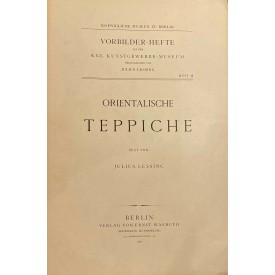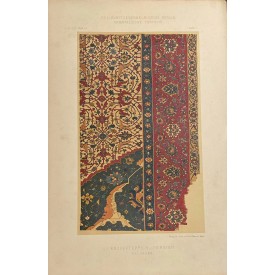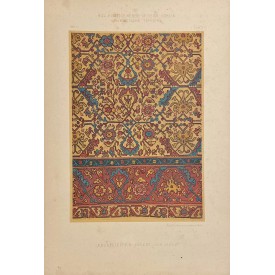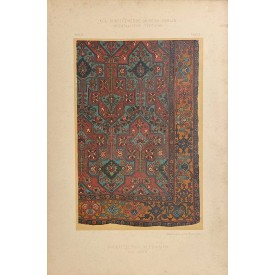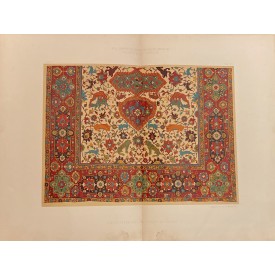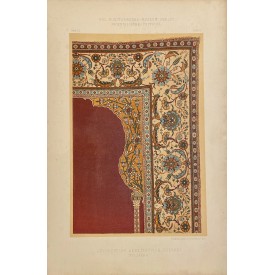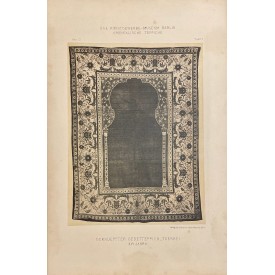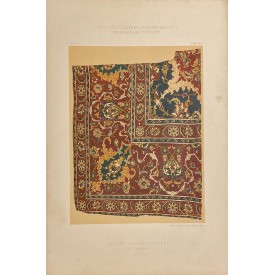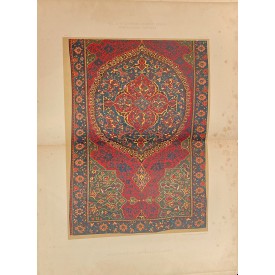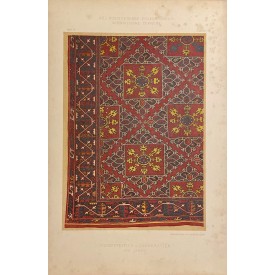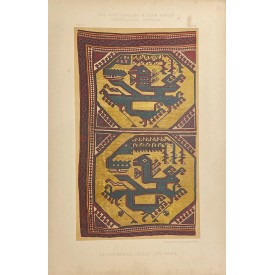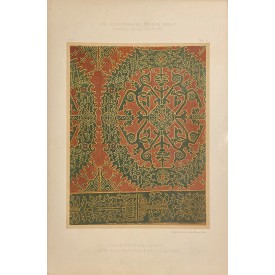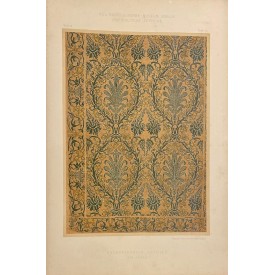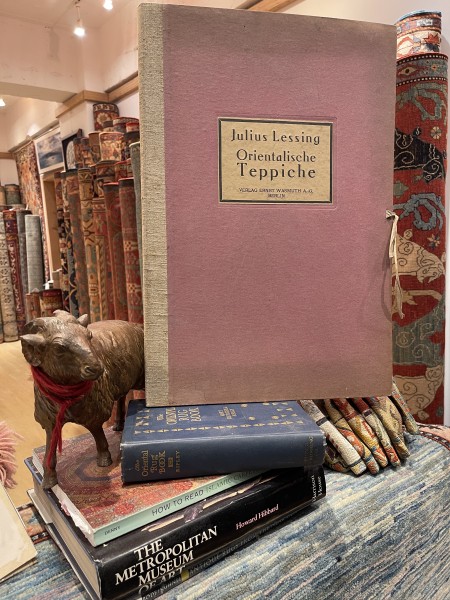
Julius Lessing (September 20, 1843 – March 14, 1908) was a German art historian and the first director of the Berliner Kunstgewerbemuseum (Museum of Decorative Arts in Berlin) as the son of a Jewish trader in clothing and ship equipment. His mother raised him after his father's early death.
He attended the Marienstiftsgymnasium in Stettin and studied classical philology and classical archaeology at the universities of Berlin and Bonn. During his studies, he joined the Berlin fraternity Arminia in 1863. After receiving his doctorate in Bonn in 1866, he traveled extensively and, from 1870, taught the history of decorative arts at the Berlin Building Academy and the Commercial Academy as a professor. Even after the two academies were merged to form the Technical University in 1879, he continued teaching until 1894.
From 1888 onwards, Julius Lessing wrote over twenty booklets, including the book, in the Ararat Rugs book collection, a set of chromolithographs showing prominent examples of oriental carpets from the collections of the Berlin Museum. The rugs are mainly Persian and Turkish from the sixteenth and seventeenth centuries.
As Ararat Rugs, we reinterpret carpets inspired by the museum collections, but I feel that museums themselves are a history. A source published in the late 1800s, being a rare piece of a museum still in operation, takes us back to the time before losses due to the pre-war destruction in Berlin and it is very enjoyable to obtain information from that time. Apart from carpet history, museum histories also take us on an interesting and exciting adventure. Like, recently I visited newly opened the Arkas Mattheys Palace Carpet Museum in Izmir, Visiting new museums is equally fascinating as the historical ones, and witnessing their development is as enjoyable as our carpet production.” - Hakan KARAR
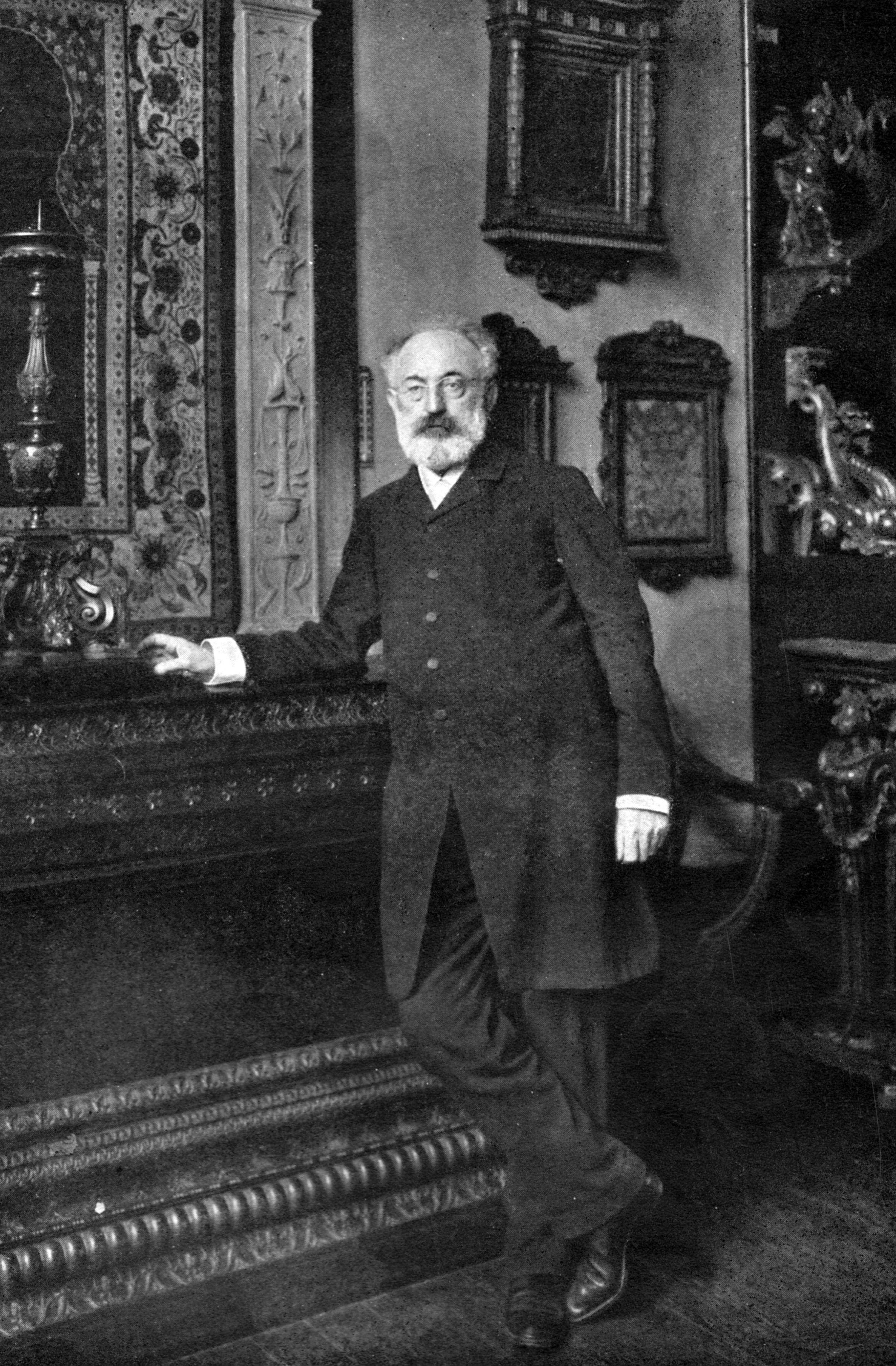 Julius Lessing, ca. 1908
Julius Lessing, ca. 1908
Julius Lessing took part in the Deutsches Gewerbemuseum zu Berlin association, founded in 1867, which had been running a teaching institute since January 12, 1868, together with two collection halls in the former Gropius diorama rented by the association on the corner of Georgenstrasse and Stallstrasse, today's Universitätsstrasse. He temporarily managed the development of the collection and was responsible for the exhibition of decorative arts and crafts works from the Kunstkammer, various palaces of the royal family, and private collections under the patronage of Crown Prince Friedrich in the Berlin Armory in 1872. The exhibition's success was the reason for the founding of an actual decorative arts museum, initially under the name Deutsches Gewerbemuseum, a separate department next to the educational institution. From 1872 until he died in 1908, Julius Lessing was the Berlin Museum of Decorative Arts collection director.

